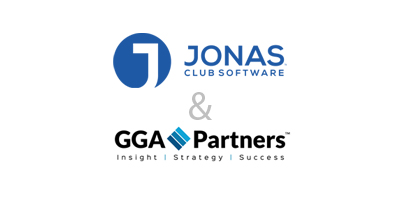In our work with clients across the globe, our research reveals that member referrals are the most important means of generating a steady stream of new prospects, which is probably not surprising. After all, the cost is nominal and you can be assured that members are going to invite prospects with a shared passion for the lifestyle provided by your club.
The most effective method to gain member referrals is to ask for them. But before you do, it is critical to understand your NPS – or Net Promoter Score – to determine the response you will receive.
NPS is an extremely valuable market research metric that is widely used across industries and can be leveraged to measure customer perceptions of a brand and estimate future growth, as evidenced by the potential for repurchase or referral to other consumers.
NPS Is Not the Same as Member Satisfaction
Member NPS is not the same as your members’ overall satisfaction with their club experience. NPS asks about the likelihood of recommending or referring the club to others while overall satisfaction asks about contentment with their experience.
In short, NPS is future-looking and overall satisfaction is backward-facing.
NPS Is Simple to Implement
NPS, originally a proprietary instrument used by Bain & Company, is now used by two-thirds of the Fortune 1000 companies as a basic measurement of customer sentiment.
The popularity and broad use of NPS is often attributed to its simplicity and transparency of use. It is a survey question which asks, “How likely are you to recommend [brand, product, service, company, or organization] to a friend or associate?” The question is designed to provide responses which are easy to interpret and track over time in trend analysis.
NPS generates valuable customer insights and is typically used and interpreted as an indicator of customer loyalty. This information is invaluable for business and community leaders who are responsible for measuring and managing revenue retention, customer retention, new business growth, or overall consumer satisfaction.
Despite the ubiquity of NPS among leading companies in major industries, the adoption and consistent application of this metric within the club industry remains limited.
A recent GGA Partners research survey of more than 500 club leaders (A Club Leader’s Perspective: Emerging Trends & Challenges) found that just 14% of clubs track member NPS in their surveys. Among clubs that employ this metric, the average NPS is +64. Additional feedback from the survey found that one-third of clubs reported an increase in their NPS during the pandemic, a positive statistic for future member growth.
Calculating Your NPS
The NPS question is asked on a scale ranging from 0 to 10, with 0 representing “Not at all likely” and 10 representing “Extremely likely”. Based on the number selected, respondents are subdivided into one of three categories: those with ratings of 9 or 10 are classified as “Promoters”, those with ratings of 7 or 8 are marked as “Passives”, and those with ratings of 6 or less are categorized as “Detractors”.
The actual “score” is calculated by subtracting the portion of detractors from the portion of promoters without factoring in the portion of passives. True NPS is always shown as an integer and not a percentage and, with the net score falling within a scale ranging from -100 to +100, it is possible to have a negative NPS.
Keys To Developing & Tracking Your NPS
1. Keep the NPS question consistent – Avoid altering the question (“How likely are you to recommend [your club] to a friend or associate?”) or the answer range (from 0 = “Not at all likely” to 10 = “Extremely likely”) as it will impact the validity and reliability of the data.
2. Ask for NPS alongside a handful of supporting questions – NPS is most valuable when supported by other overarching questions which generate datapoints on overall satisfaction, perceived value-for-money, and demographic questions (to stratify responses and dive deep into feedback by membership subsets).
3. Keep it brief – A survey with these three questions (NPS, overall satisfaction, value-for-money) and four or five demographic questions should take about 3-4 minutes for respondents to complete. Shorter is better for these types of surveys.
4. Measure NPS routinely – At a minimum, your NPS metrics should be tracked and updated annually to identify changes in the sentiments of your members. Whether they are rising or falling, understanding the factors impacting changes in your trend line will provide valuable insight into areas where the club is excelling as well as areas that need improvement.
If your club aims to be truly attentive to overall satisfaction, member loyalty, member and customer retention, or using member referrals to support membership growth, leaders of the club should be monitoring NPS as a matter of routine. If this acronym isn’t surfacing in boardroom discussions, it should be.
While no one can predict the future, a clear understanding of your NPS will provide a data-driven indication of members’ loyalty to your club’s brand and the success you will have when asking your members for referrals.



